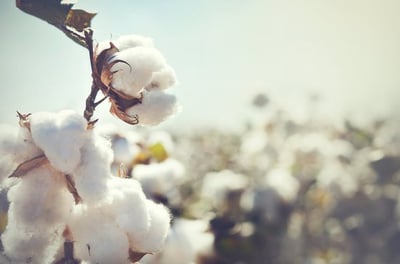The fashion industry has the 4th largest environmental impact on the world, preceded only by housing, transport and food. 1.7 billion tonnes of carbon dioxide were released by the fashion industry in 2015 – roughly 5.4% of the total carbon emitted in that year.
Over the last 100 years, the retail industry has gone through many changes. The number of garments being bought has risen rapidly since the growth of fast fashion in the UK. On average, 2 million tonnes of clothes are bought every year, with approximately half of these being thrown away.
Is the fashion industry alone?
Fashion isn’t alone in needing to improve. Often, the sustainability of one industry will be directly affected by that of others. Take leather, for example. Leather is used to create many products sold in the fashion industry: bags, belts, boots, jackets, wallets etc. The high emissions caused by the creation of such leather goods are the result of not only the manufacturing process but also the keeping of livestock, which also affects the food and fashion industries.
Improving sustainability in fashion
Large numbers of organisations are attempting to tackle the social and environmental impact of their brand. Retailers are implementing strategies that aim to reduce their chemical, water, waste, energy and carbon footprints. One common goal is to improve the amount of sustainable cotton being used during garment production.

The Waste and Resources Action Programme (WRAP) launched SCAP (Sustainable Clothing Action Plan), a “collaborative framework and voluntary agreement” with the aim of reducing the carbon, water and waste impacts of involved organisations. Since the launch of SCAP, signatories have:
- Reduced their carbon by 10.6% (one and a half hot air balloons of carbon)
- Reduced their water by 13.5% (23 baths full of water)
- Reduced waste across the product cycle by 0.8% (30 pairs of women’s jeans per tonne of clothing sold)
More recently, The Apparel Impact Institute (AII) has been established by retailers and charities to assist key players in overcoming challenges relating to reducing the fashion industry’s social and environmental impacts by connecting them with appropriate resources. AII’s first project will be to improve the environmental impact of clothing production in mills. In the future, projects will include closed-loop recycling as well as working well-being.
Despite the current number of retailers, charities and other organisations trailblazing sustainable fashion, it hasn’t always been easy. Fashion designer Stella McCartney notes that there were millions of sceptics when she launched her fur-free, leather-free fashion empire in 2001 when describing her hopes for a more sustainable fashion future.
Sustainability in the fashion industry is definitely growing and whilst sustainable clothing may not be at the forefront of fashion right now, one day it might be. One thing’s for sure, it’s not going away.
Originally Published 31/10/2017


